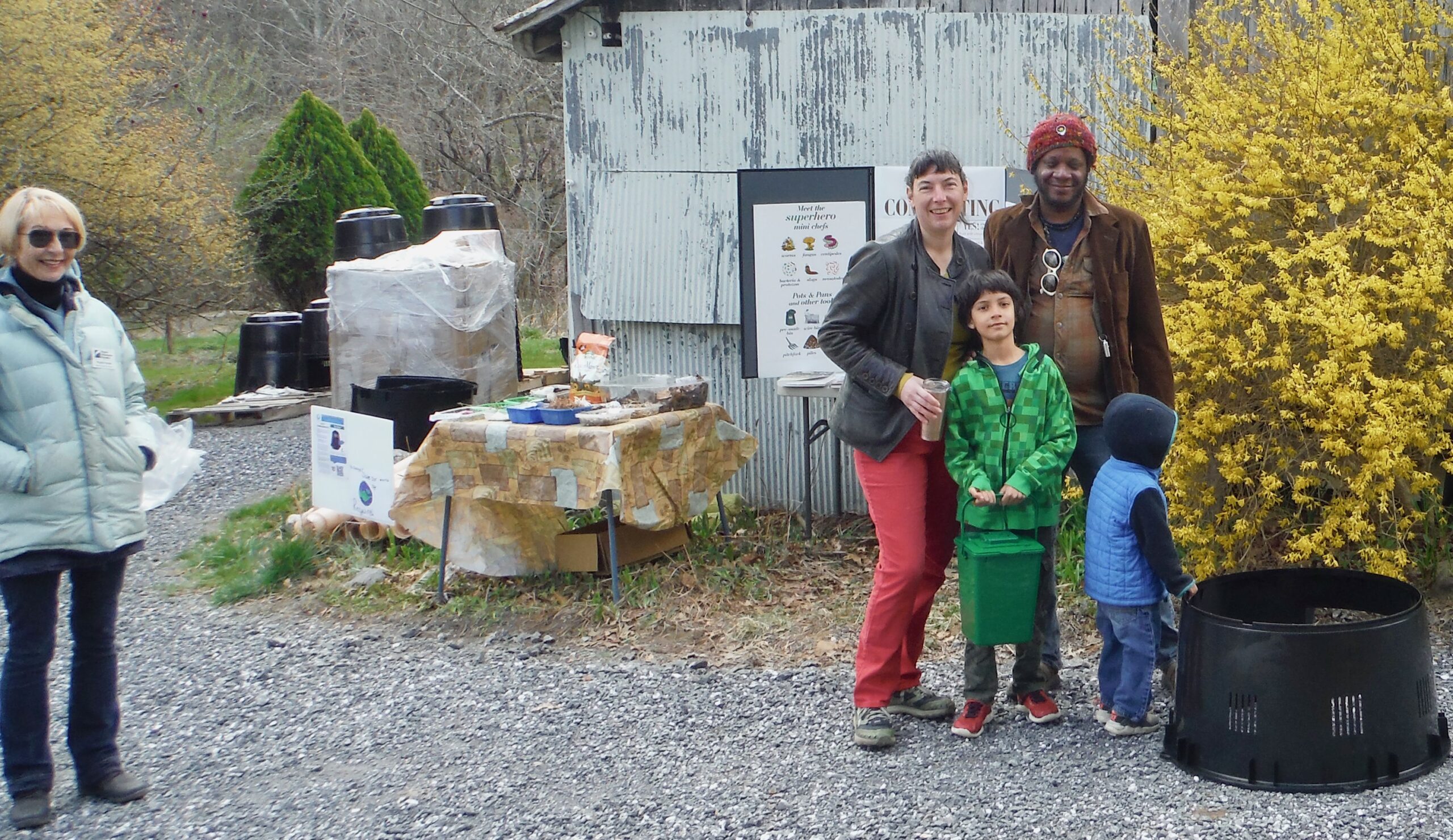
If you were one of the many folks who came to pick up your composting supplies on Saturday, March 11th you probably spoke with Phyllis Fevrier (photo, far left). She, along with other Master Gardener volunteers, had a wonderful informational display table all about how to compost successfully. Phyllis is an invaluable resource for all things gardening and compost, and we at Boxerwood are lucky to count her as a friend.
Phyllis shared some composting wisdom last year for the 2022 cohort and it was so helpful we want to share it again with this year’s group. Basically, Phyllis invites us to think about the composting as creating a happy kitchen for the micro-chefs “cooking” up new garden soil. Here’s what she wrote:
Compost starts with creating HABITAT. Creating the right habitat for the hungry decomposers to survive and grow is easy. We can use our own “green” and “brown” materials.
Who are these tiny chefs, our decomposers?
In this composting cafe, we find earthworms, springtails, pill bugs, fungus and bacteria all working together to find and share nourishment from the greens and browns we provide.
What is the best recipe for our ambitious little decomposing chefs to make a finished compost meal?
These tiny decomposers need both carbon and nitrogen in their diet. Greens such as food scraps, grass clippings, and weedy green leaves are high in nitrogen, and digestible sugars and starches, but they are low in carbon. Browns are very high in carbon yet harder to digest (sawdust, dried leaves, hay, straw, paper). These decomposing chefs need a good ratio of greens to browns to thrive, about 1:3-4 per volume. With the right mix, plus air and water, decomposers have what they need to survive. They’ll be able to reproduce, prosper, and break down the greens and browns into rich compost.
Pro Tip: To keep your composting café active, layer 3-4 inches of browns over every 1 inch of greens. Repeat this recipe over time. Make sure the compost gets a little air (use shovel or pitchfork to lift it up occasionally) and stays moist. This mix of greens and browns gives the right nutritional balance for the tiny decomposer chefs who in turn transform our waste into rich food for the soil.
